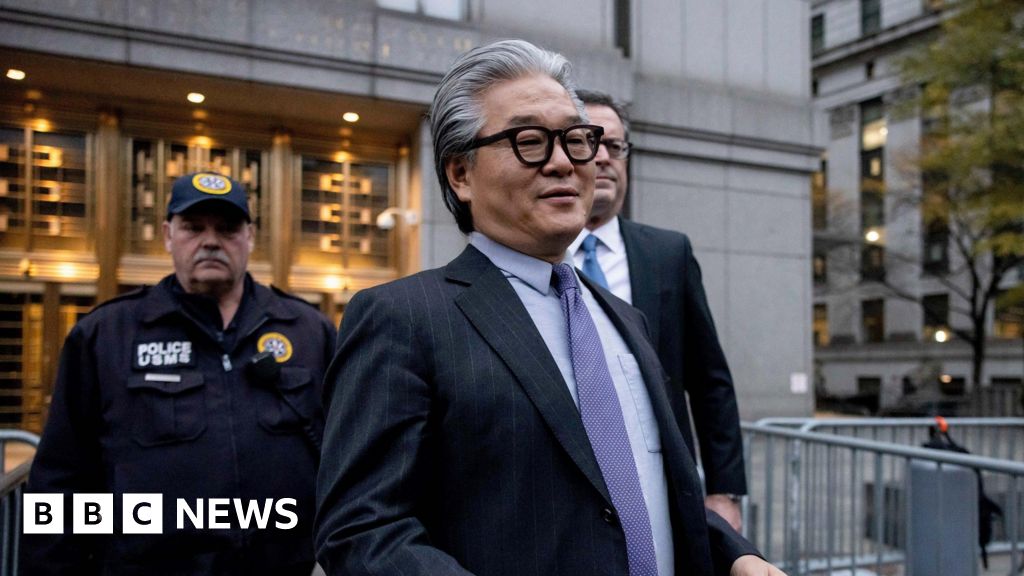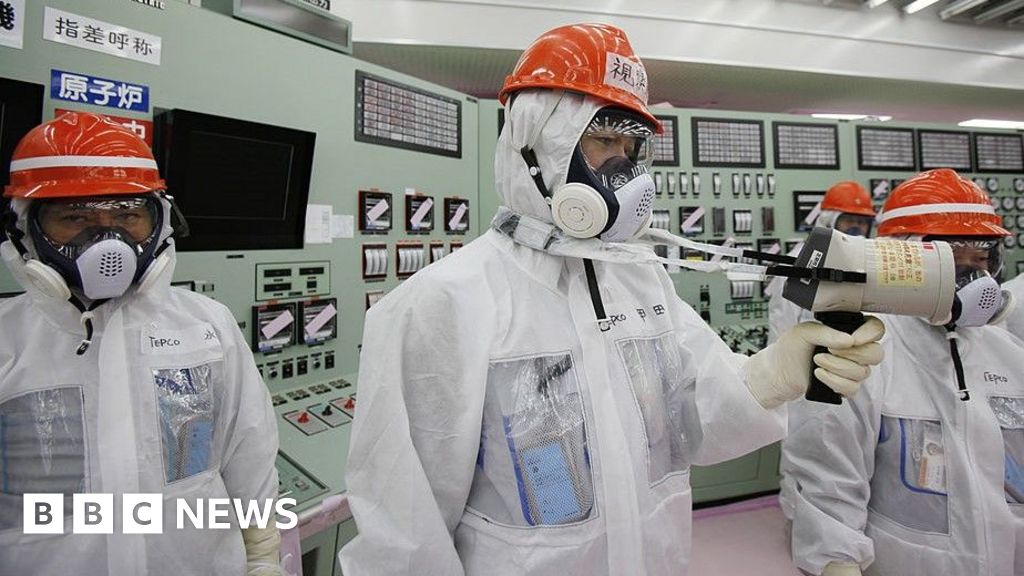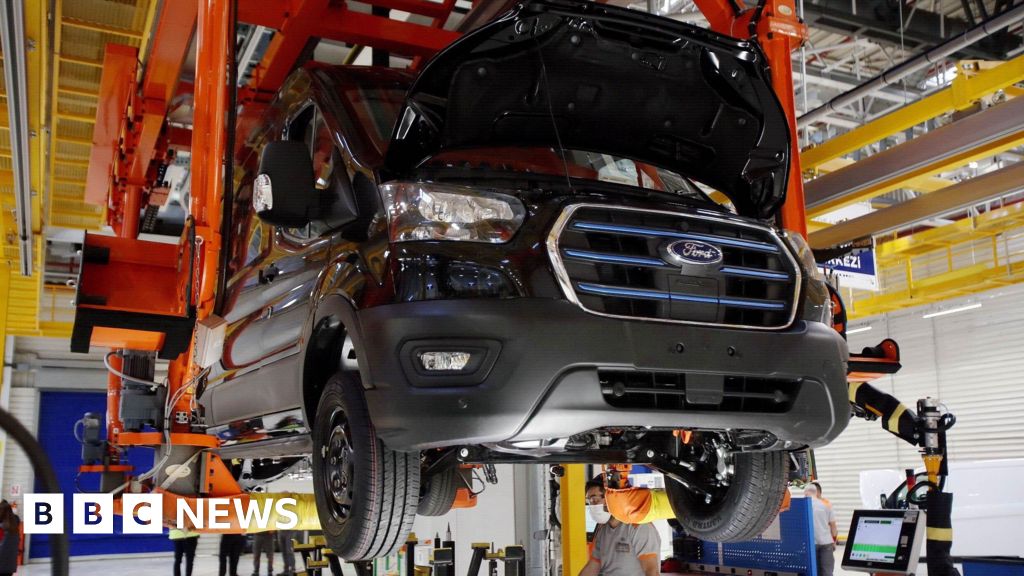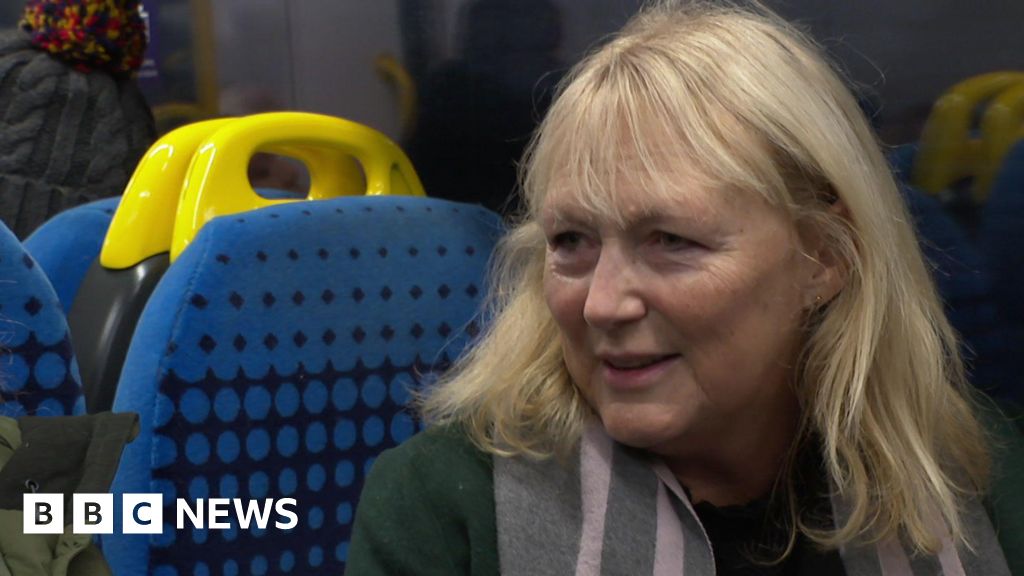
 Chris Baraniuk
Chris Baraniuk
It's estimated that one third of the world's airline seats are made in Northern Ireland
In a warehouse building in a quiet town in Northern Ireland, a robot arm is opening and closing an airplane meal table over and over again.
It has been programmed to carry out this mundane task no fewer than 28,000 times, day and night, for more than a week. And it won’t even get a bag of peanuts.
“We can measure the force that the robot’s having to apply to that,” says Gerald King, head of engineering at Thompson Aero Seating in Banbridge. “Is it increasing? Which means more friction.”
Thompson makes first class and business class seats – the expensive kind usually at the front of passenger aircraft, with their own privacy-simulating enclosures, built-in entertainment systems, and heaps of leg room.
The company has various machines for testing the longevity and safety of such seats. Including a new £7.5m facility, opened last autumn, where crash test dummies are strapped to a seat and shot down a short track at incredible speeds.
The idea is to ensure that the seat – and passenger – would survive a brief exposure to 16 g’s. It is the only facility of its kind on the island of Ireland.
Perhaps surprisingly, just under one third of the world’s aircraft seats are manufactured in Northern Ireland, according to Invest NI, an economic development agency. Thompson, which was bought by a Chinese company in 2016, is one of a few businesses in the region that specialise in this trade. The firm currently churns out roughly 1,500 seats per year.
Another major Northern Ireland-based supplier of seats is Collins Aerospace, in Kilkeel. There is also Alice Blue Aero, in Craigavon.
One of the largest seat manufacturing companies worldwide is Safran. It has facilities on six continents.
But, thanks to the pandemic, demand for aircraft seats has flip-flopped dramatically of late. When Covid-19 emerged, the aerospace manufacturing industry slowed to a crawl. Globally, companies laid off thousands of workers. Thompson, for one, cut its own workforce in half, and has faced financial losses running to many millions.
The world has at last opened up again, but seat manufacturers have not been able to find all the skilled workers they need, meaning that demand, globally speaking, is outstripping supply. It is a “very difficult situation”, Airbus’ chief executive said in June, referring to the slow supply of seats and other cabin parts.
“The industry lost that expertise, both in terms of direct, hands-on manufacturing, but also in terms of teaching younger people how to do the job,” explains Nick Cunningham, an analyst at Agency Partners who tracks the fortunes of another seat maker, Safran.
One of the problems, he adds, is that seat makers are finding it hard to get their seats tested and certified quickly by third-parties, since they are also facing labour shortages.

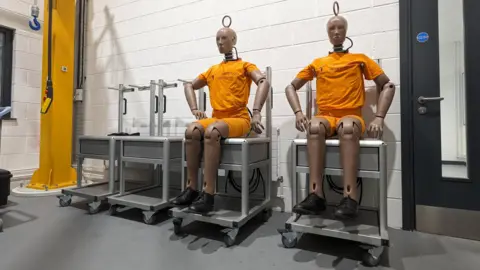 Chris Baraniuk
Chris Baraniuk
Testing and certifying airlines seats has held up production
Thompson, however, can sidestep this problem with its in-house testing facilities, explains Colm McEvoy, vice president of corporate accounts. He says that the firm is able to meet its customers’ needs at present, though he adds, “We’re having to be very strategic with regards to the new customers.”
There are more than 650 people working at Thompson’s sites in Northern Ireland, but, at the time of writing, the company had more than a dozen job vacancies listed on its website. “We’re in competition with other manufacturing companies to try and secure the best talent,” says Mr McEvoy.
Despite this challenge, Thompson has a five-year plan to multiply its annual output of seats. Mr McEvoy shows me around the factory floor at the firm’s Portadown site, where workers are busy riveting aluminium seat parts together, and checking the complex wiring for the entertainment systems in these expensive structures – each seat costs “tens of thousands” to make, says Mr McEvoy.
“This seat in front of you is the most complex seat we make,” adds Eoin Murray, operations manager. It takes around 100 hours for the highly skilled workers here to assemble in full.
More Technology of Business
Mr Murray is determined to boost the rate of production on this factory floor. He shows off a jig, developed in-house, upon which a seat can be mounted and angled so that workers can easily access the sides or underside. “This allows us to hit like a rate 14,” says Mr Murray – 14 seats produced in one shift. “I need to get to 18. To 20,” he adds.
To that end, there’s another even more capable version of the jig in the room next door, a prototype that staff here hope will be even better. Mr Murray and his colleagues are also developing new working practices – such as utility belts with tools arranged in the sequence they are required.
If the worker is left-handed, that sequence can be reversed so that the process of picking a tool and carrying out a task with it is as rapid as possible.
Workers here rehearse and hone key stages of seat assembly, which helps them go faster. A bit like learning how to build the same piece of Ikea furniture over and over again until it becomes like muscle memory, I suggest – just a lot more complicated.
“We can seamlessly slot people in, and they can now work through these different stages with no computers,” says Mr Murray. “When I started working here, if you told me I would be working without a computer I’d have told you [that] you were crazy.”

 Chris Baraniuk
Chris Baraniuk
More and more technology is going into airline seats
Besides volume, there is constant pressure to come up with new and better seat designs, says Mr McEvoy. Airlines want the latest and best entertainment technology, for example – 32 inch screens are now included in Thompson’s top seats.
“They’re striving for something different, something that makes them unique,” Mr McEvoy adds. Thompson uses leather and soft fabrics on selected parts of the seat and enclosure to provide a luxury feel, which is increasingly popular with airlines. The seats themselves can recline into two-metre long, fully flat beds.
One I try for myself is certainly comfortable – though I would probably have to lie in it for seven hours or so to test it properly, I think to myself.
“They’re good firms, very, very good firms – they know what they’re doing,” says Marisa Garcia, an aviation industry analyst who used to work in seat manufacturing herself, referring to the Northern Ireland-based companies who make aircraft seats. She has no commercial relationship with any of them, she adds.
Despite supply chain headaches, seat manufacturers are in a good position to clean up, if they prove themselves able to keep pace with industry requirements, says Ms Garcia: “The demand is there from passengers – and the demand is there from airlines.”

 2 months ago
14
2 months ago
14


